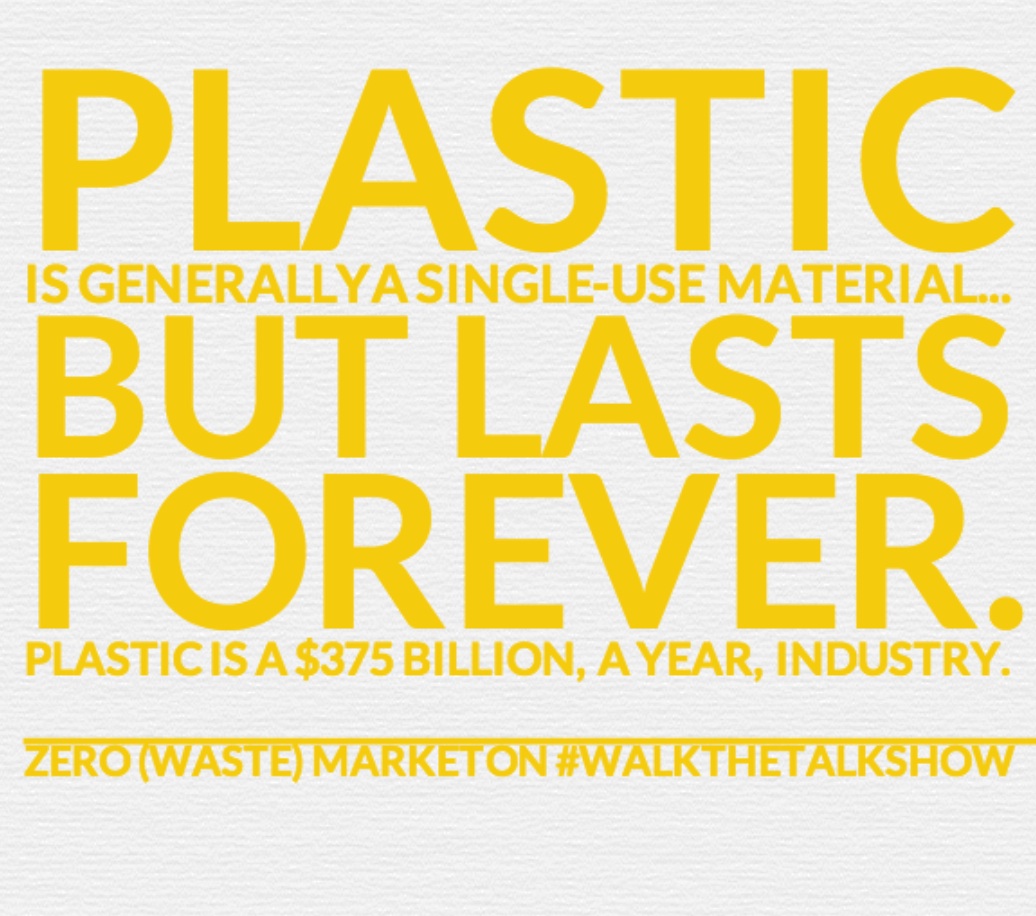Take a look at that plastic 20-ounce soda bottle you’re drinking from. You know the one—that Diet Pepsi or Mountain Dew bottle that’s sitting on your desk.
How long do you think that piece of molded plastic is going to be around before it dissolves back into the earth from whence it came? Five years? Ten? Maybe 20 because, you know, it’s plastic?
Try upwards of 500 years. For real.
Here’s another crazy fact: nearly every single piece of plastic ever made is still around today. They fill our landfills, pollute our oceans, and pollute nearly every spot on the planet.
We throw out 35 billion plastic water bottles each year. Americans use 2.5 million plastic bottles every hour.
We use 500 billion plastic bags worldwide each year, even though the average “working life” of each bag is only 15 minutes. From plastic takeout boxes, to milk jugs, to clothing tags and everything big and small in between, over the last 70 years, we’ve become dependent on plastics.
Making new plastic involves using hazardous chemicals like benzene and vinyl chloride. Recycling the plastic that we already have on our planet would make perfect sense.
Yet, currently, we only recycle 1-2% of our plastic waste.
Enter 3D printers.
This relatively new technology uses scanners to make a 3D model of an object or person, then recreates the physical characteristics of the model. There are several types of 3D printers, and some function in different ways, but the most common type, fused deposition modeling (FDM) printers, use heated plastic filament to reconstruct the desired figure.
Architecture, medicine, paleontology, manufacturing, and even pop culture have practical applications for 3D printed objects, and their uses are growing. From toys to jewelry, and from artificial limbs to wind turbines, the possibilities are endless!
Several new companies are combining social and corporate innovation to help solve our massive plastic problem with 3D printing technology.
The Perpetual Plastic Project is using recycled plastic bottles, cups and packaging to make 3D printing filament. They’re out of The Netherlands, but they tour Europe collecting plastics and educating people both on what they can do with 3D printing and the importance of recycling. It’s fun and hands-on, so people of all ages become engaged and excited about taking care of the environment and learning the latest in 3D technology.
In North America, three engineering students from the University of British Columbia came up with a desktop version of a grinder that turns plastic soda bottles, milk jugs, Legos and just about any other plastic into filament for 3D printing. While there are other desktop versions that do this, theirs is the fastest, they say, kicking out about 10 feet of filament in a minute. Their invention, called the ProtoCycler, not only cuts the cost of filament; it makes it free.
This technology is even saving lives. In Nepal, Field Ready is printing medical supplies for hospitals and clinics that desperately need them, and umbilical cord clamps in Haiti.
Cleveland Clinic, known for taking high-risk medical cases, is using 3D printers to create detailed models of organs so that surgeons can analyze veins, arteries and anatomy unique to each patient before they make a single incision.
These companies, and others like them, could be a viable answer to the growing problem of plastic waste worldwide. Not only do they empower consumers to do something with their plastic waste, they are creating useful products, and creating jobs while they’re at it.
Based on the growing numbers of products on the market made from plastics, they are here to stay. We can’t prevent companies from using plastics, but we can help reduce waste and pollution by making recycling easier and profitable for companies that develop and use recycling technology.
It only makes sense, from every dimension, to embrace 3D technology and take advantage of these opportunities for our environment, our economy, and our future.
Author: Amanda Christmann
Image: elephant journal
Editors: Emily Bartran; Sara Kärpänen









Read 0 comments and reply